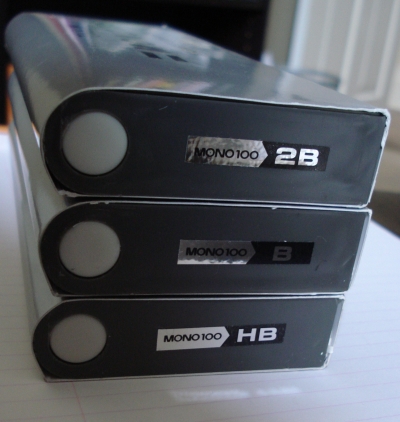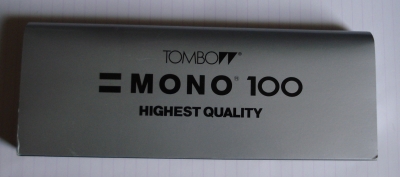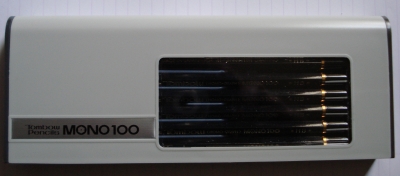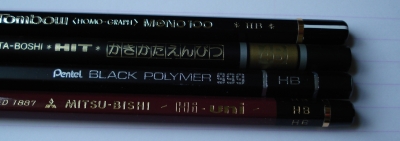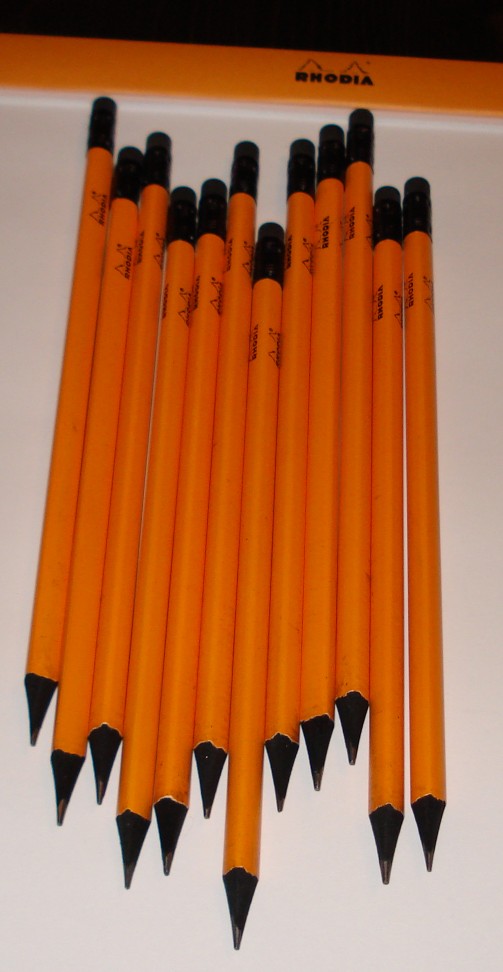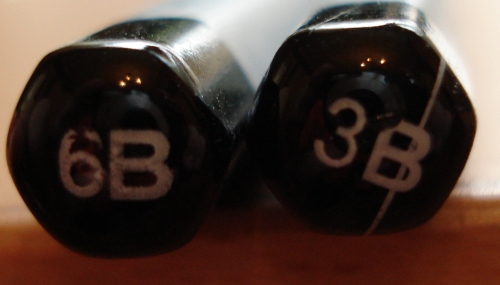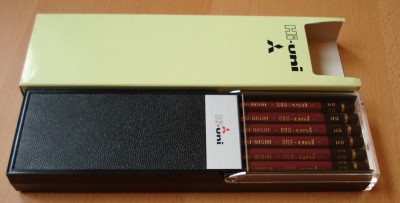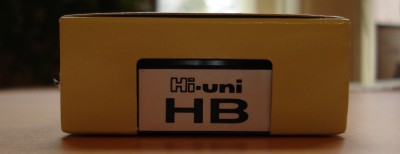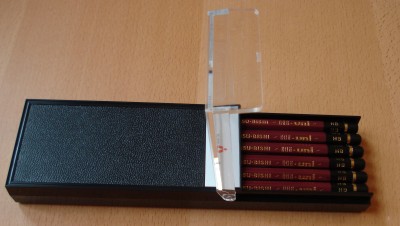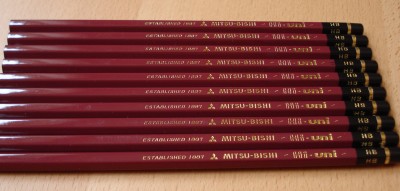
Left to right: LYRA Dessin No. 2, Eberhard Faber Magazin, LYRA No. 92 Steinhauerstift
One thing about pencils is that they sure don’t make ’em like they used to. Oh, there are still excellent pencils to be had, like many of the ones I write about in this blog. But you can’t get them at a regular office supply store, or a department store. You can track down obscure Japanese stationers, or specialty online retailers, but even they often have limited selections.
But one other way to get some great pencils is to buy old pencils. Not used pencils, but pencils that have just been hanging around, maybe put out at a garage sale, or for sale on Ebay. Many (most?) of these pencils from a few years ago are of excellent quality, and some are outstanding. They’re not like today’s office supply store cheapos.
In Canada, a quality pencil like a Faber-Castell 9000 or a Staedtler Mars 100 ususally goes for $C1.75 at an art supply store. With 14% tax that’s $C2.00 even. (That’s $US1.75.) It’s a lot more than most people care to pay for a pencil. At a big box office supply place, that type of cash can buy two dozen no-name pencils! But the ten-cent pencil is usually scratchy, badly finished, and a poor writer.
I mention this because my spending limit for a good old pencil is the cost of a good new pencil. But they’re usually less. And this has to include any shipping costs, since I can walk to the places that sell the Staedtlers. I’ve usually been delighted, though occasionally felt ripped off. Someone who seems to be cleaning out an attic … often is, and pencils from them may be mis-described, and in a foul state – stereotypical Ebay junk. And packaging – it’s kind of amazing how shoddy the packaging often is, even though the seller is charging for this.
The good side is getting something like the LYRA No. 92 Steinhauerstift. This is some sort of carpentry or craft pencil, I suspect. It’s beautiful, and it looks like it stepped out of a history book. Plus it cost less than a modern Lyra, which I can still easily buy.
I don’t want to start “collecting” or buying more than I can appreciate and use, but an occasional older pencil is really a joy.
Anyone else out there enjoying some older pencils?

